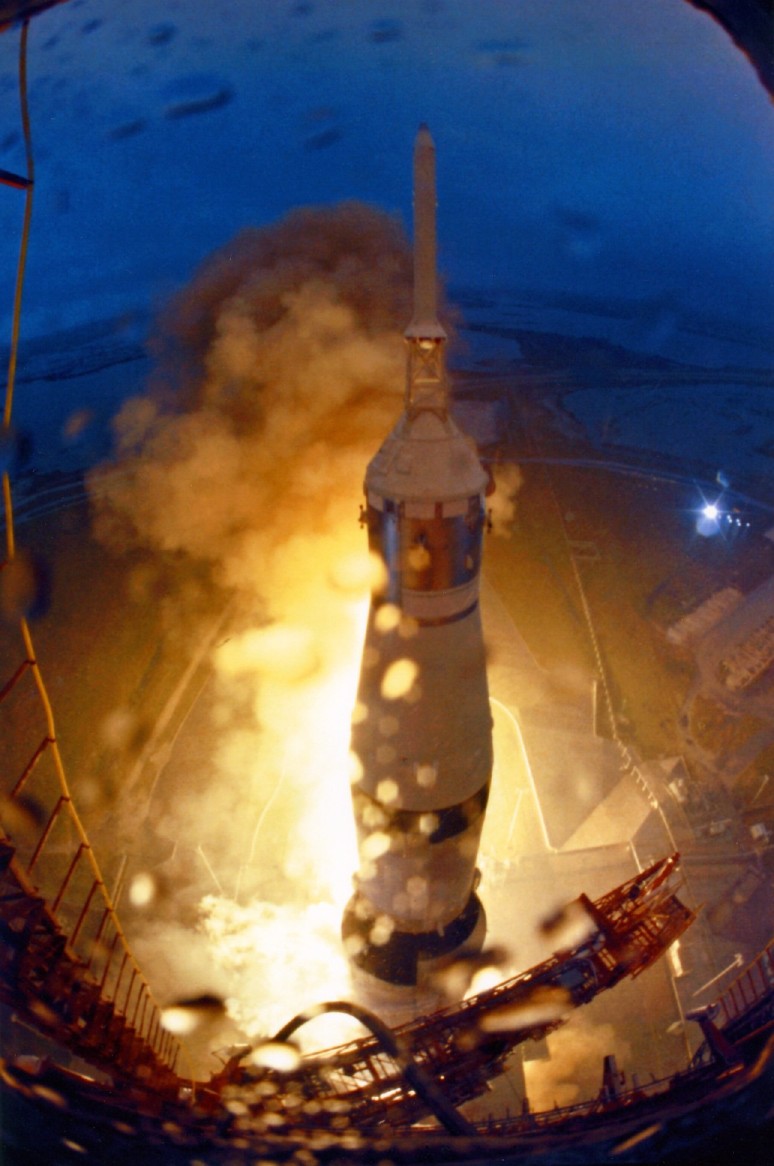Looking out across the Atlantic Ocean from the shore of Cape Canaveral, as far as the eye could see, the sky was gray with low clouds and a light rainfall pattering across the choppy waves. It had been raining the morning of November 14, 1969 and mission control at Kennedy Space Center in Florida had its doubts about the go-ahead for the launch. Despite the weather, thousands, including then President Richard Nixon, had gathered on the beaches for miles around to see Pete Conrad and the crew of Apollo 12 free themselves from the weight of Earth and make their way through the emptiness to the lunar surface beyond.
Americans have always loved their heroes. We remember the brave pioneer planting his flag at the top of the mountain while looking around certain in his knowledge that he did it first. In the U.S., we have holidays celebrating Christopher Columbus sailing across the Atlantic Ocean in 1492 and accidentally discovering the Bahamas, but no one remembers Amerigo Vespucci, the guy who figured out that despite what Señor Columbus was saying, this place wasn’t India. Just as certain, Americans love tragedy. But we are a sentimental lot here in the USA and while we like things sad and depressing we demand a happy ending at the final. You can frighten us with the idea of widows and orphans but in the end like good Hollywood moviemakers you better make sure that everything works out.
It makes perfect sense that we remember Apollo 11 with heroic Neil Armstrong and square-chinned Buzz Aldrin along with Michael Collins in the pilot seat blasting off towards history or almost as famous Jim Lovell and his crew aboard the ill-fated Apollo 13, struggling to survive while circling their goal, almost there but never to succeed, clinging to their landing craft as a lifeboat in the vacuum. With that in mind, it also makes perfect sense, and what does it say about us that it does, that most of us know nothing about Apollo 12, which held the second human landing on the surface of the moon. Even with several drawbacks and serious issues, Apollo 12’s flight is a textbook example of NASA planning and logistics at their finest.
Despite the weather, Mission Control had decided with some reservations that the conditions were safe enough for successful launch. And so on that November morning the order was given to continue the countdown and the engines of the Saturn V rocket carrying Conrad, command module pilot Dick Gordon, and lunar module pilot Alan Bean, were lit. Slowly at first, but quickly building to impressive speed, the vehicle lifted itself from the earth. Disaster nearly struck only 36 seconds into the flight when the rocket itself generated a bolt of lightning that reached all the way to the ground and temporarily took the primary fuel cells of the rocket offline. Only a quickly thought-out circuit change performed by Alan Bean in the right-hand seat brought the command module back to full power preventing the mission from ending before it could even begin. Mission control then had an even bigger scare when seconds later a bolt of lightning struck the rocket causing the telemetry coming back to Earth to be jumbled and unusable. However, the rocket remained firmly on course, undamaged and heading into a parking orbit around the Earth.
Safely in orbit around the planet, the crew Apollo 12 spent several rotations checking their circuits and systems ensuring that the hard flight into orbit hadn’t damaged the rocket or endangered the mission. Satisfied that the vessel was good to go and that the crew was not in danger, Mission Control gave the go-ahead and the second stage of the rocket was lit, placing Apollo 12 into a translunar trajectory towards the moon. With the burn behind them, the command module Yankee Clipper and the lunar module Intrepid separated from their position on top of the now spent Saturn V rocket continuing on their journey towards their planned landing site on the moon’s Ocean of Storms.
After a three-day flight, on November 17, 1969 Conrad and his crew reached their destination going into orbit around the Moon. A day was spent preparing the lunar module before Conrad and Bean entered their vessel leaving Gordon as alone in the universe as few men have ever been and began their descent toward the lunar surface. It was November 19, 1969 and mankind was about to take its second set of steps onto another world.
Intrepid’s landing was easy and uneventful, placing the lunar module within just a short walking distance of the unmanned lunar vehicle Surveyor III that had sat waiting in a small crater since the end of its mission in 1967. Unlike Apollo 11’s quick landing, look around and leave approach, Apollo 12 was designed for a longer and more complex look at the Moon, with the plan of having both astronauts on the lunar surface for extended periods of time. On their first trip outside of the lunar module, Conrad and Bean spent hours walking along the lunar surface collecting rocks and other lunar samples. The only setback came when Bean accidentally faced the lens of the missions color television camera toward the sun burning its systems out and cutting off the broadcast television feed to Earth. Conrad proved not to be nearly as concerned with the proprieties of history as Neil Armstrong had been a few months earlier, proclaiming as he stepped from the lunar module, “Whoopie! Man, that may have been a small one for Neil, but that’s a long one for me.”


Comments are closed.